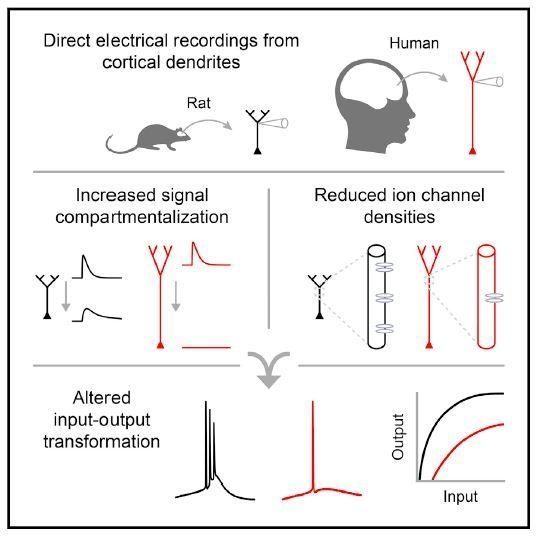Page 2621
Oct 20, 2018
Want to know when you’re going to die?
Posted by Carse Peel in categories: biotech/medical, life extension
New DNA tools can decode your natural lifespan…
Your life span is written in your DNA, and we’re learning to read the code.
Oct 20, 2018
Deafness could be reversed? Scientists discover how to regrow lost cells in the ear
Posted by Carse Peel in categories: biotech/medical, genetics

Could deafness be reversed? Scientists re-grow damaged hair cells that have been killed off by age or noise inside the ear…
Researchers from the University of Rochester found that viruses, genetics and even existing drugs could cause little hairs to regrow in the inner ear. These hairs pick up on noises entering the ear.
Oct 20, 2018
Milky Way’s Youngest Pulsar Found 19,000 Light-Years From Earth
Posted by Genevieve Klien in category: cosmology
The pulsar is roughly 500-years-old and was spotted with the help of NASA’s Chandra X-Ray Observatory.
Astronomers have managed to locate the youngest pulsar in the Milky Way, NASA announced yesterday. Dubbed PSR J1846-0258, the pulsar was spotted inside one of our galaxy’s supernova remnants — found 19,000 light-years away from our planet, in the Aquila constellation (The Eagle).
This exciting discovery — first detailed in a study published earlier this year in The Astrophysical Journal — could shed more light into supernova explosions and the new beginnings that arise from the death of a stellar giant.
Continue reading “Milky Way’s Youngest Pulsar Found 19,000 Light-Years From Earth” »
Oct 20, 2018
The Eternal Quest for Aether, the Cosmic Stuff That Never Was
Posted by Genevieve Klien in category: futurism
Aristotle called it the fifth element. Alchemists thought it was the key to the philosopher’s stone. Scientists believed it was the stuff light moved through. But it never existed at all.
Oct 20, 2018
What would you see if you could travel at the speed of light?
Posted by Genevieve Klien in category: futurism
Einstein’s Special Theory of Relativity was born from this very question, and the answer is as weird as you’d expect.
Oct 20, 2018
Artificial intelligence better than physicists at designing quantum science experiments
Posted by Klaus Baldauf in categories: particle physics, quantum physics, robotics/AI, science
Perhaps physicists should leave human intuition at the laboratory door when designing quantum experiments too.
An Australian crew enlisted the help of a neural network — a type of artificial intelligence — to optimise the way they capture super-cold atoms.
Usually, physicists smoothly tune lasers and magnetic fields to gradually coax atoms into a cloud, according to study co-author Ben Buchler from the Australian National University.
Oct 20, 2018
A Future Made of Mars
Posted by Klaus Baldauf in categories: computing, food, space travel
Towards this goal, I have founded the company, Made of Mars, to develop the technology we need to build beyond Earth. Made of Mars is working to transform the materials and minerals that we know are on the Moon, Mars and asteroids throughout our solar system into products that we can use today. This innovation will be used to build the space civilization of tomorrow.
Made of Mars will begin by learning to build with volcanic basalt. Basalt is the same lava rock that forms Hawaii, Iceland and countless volcanoes around Earth. Basalt is the most common material on Mars and is widespread throughout Earth and much of the solar system. Starting with these rocks, basalt is mined, re-melted, and pulled into thin threads which are then woven into fabrics. Made of Mars is transforming these basalt fabrics into products you can use today. The first basalt product line has been launched on Kickstarter where these volcanic rocks will be highlighted through a series of wallets and computer cases. These simple products will showcase the material and process. Made of Mars aims to encourage development of this material, setting the stage for space necessities to eventually be built from basalt, from suits to spaceships.
Building for a future beyond Earth does not mean abandoning our planet. We have always been a species of explorers and migrants, but remain nostalgic for our roots. Learning to build with basalt will both be key for a future beyond Earth and our future on it. Our technological advancements have improved the lives of billions while putting a terrible strain on the resources and environments of Earth. Basalt may be a solution toward sustaining our home planet. It is one of the most abundant and widespread resources on Earth. Basalt is continuously erupting on the surface and requires no chemicals to process. Unlike cotton, it does not compete with food production. Unlike synthetics, it does not come from fossil fuels. After it is used, basalt can be remelted and reused. Discarded basalt would naturally weather and recycle back to new volcanoes, as is the natural cycle of basalt.
Oct 20, 2018
Are You Going To Wake Up From Cryosleep?
Posted by Klaus Baldauf in categories: biotech/medical, health
We strongly believe that only digital health can bring healthcare into the 21st century and make patients the point-of-care.
Oct 19, 2018
Study pinpoints what makes human neurons unique
Posted by Xavier Rosseel in categories: energy, neuroscience
Human neurons are much larger than those of model organisms mice and rats, so it’s been unclear whether it’s size that makes a difference in our brain’s computational power. Now, in a study appearing October 18 in the journal Cell, researchers show that unlike those of other animals, human neurons employ highly compartmentalized signaling. Human dendrites—the tree-like branching structures that function as neurons’ antennas—process electrical signals differently than dendrites in rodents, the most common model systems for studying neuronal properties.
“The human neuron is basically like a rat neuron, but because it’s so much longer, signals have much farther to travel. The human dendrites thus have a different input-output function” from rats, says senior author Mark Harnett, the Fred and Carole Middleton Career Development Assistant Professor in the Department of Brain and Cognitive Sciences at the Massachusetts Institute of Technology. “Dendrites farther away from the cell body have fewer ion channels, which control signal processing. That was something we absolutely did not expect.”
Harnett, who studies how the biophysical features of neurons shape information processing in the brain, believes our longer, bigger dendritic arbors endow human neurons and their respective circuits with enhanced computational abilities.
Continue reading “Study pinpoints what makes human neurons unique” »

















